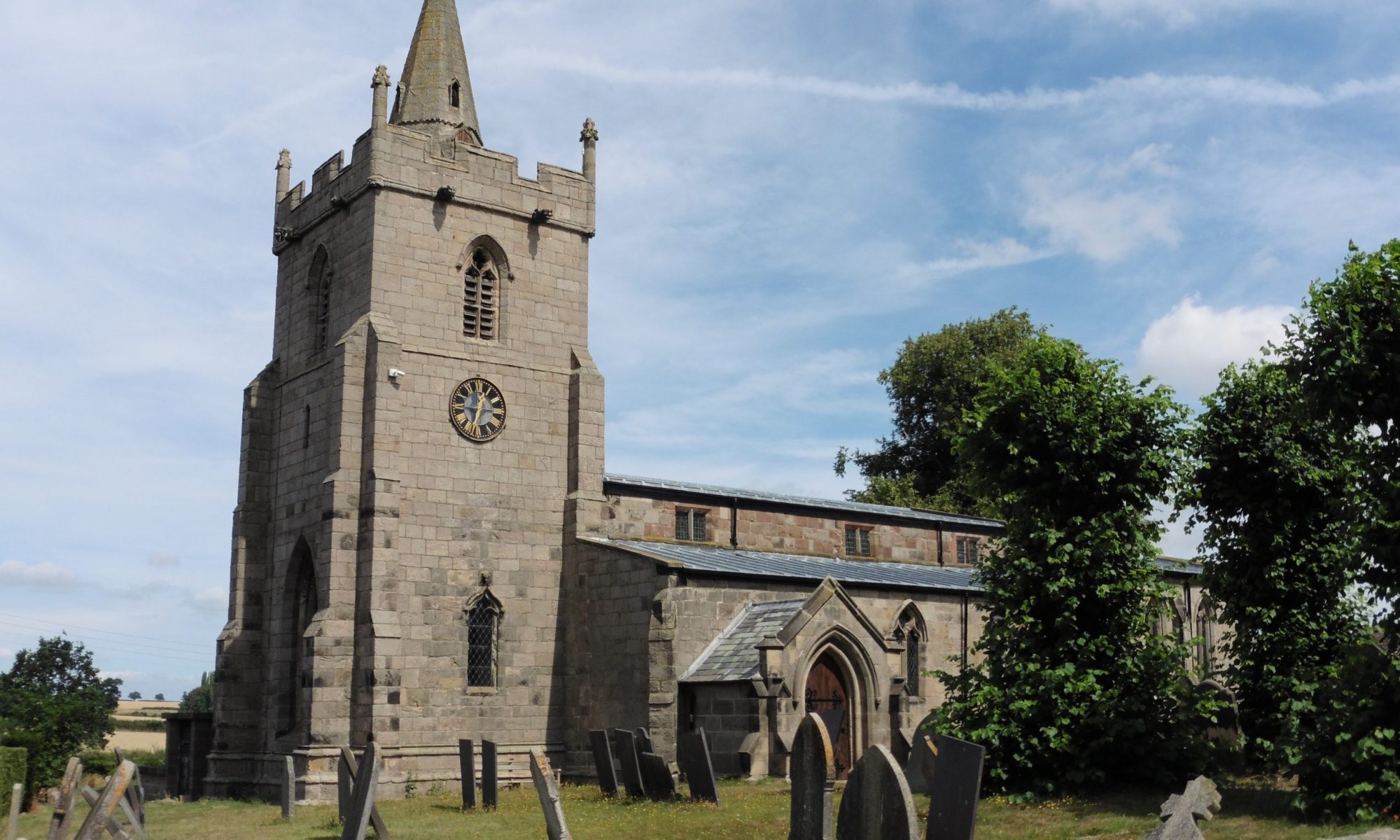The Norman invaders divided England amongst them and Henry de Ferrers had an enormous amount. His estate filled five folios of the Domesday Book and he had 90 manors in Derbyshire alone. He set up his headquarters at Tutbury, where he built the castle and a priory for monks from St Pierre sur Dives in Normandy. The Priory was allotted the tithes from some of his lands, an area including Egginton to Brailsford and Mayfield to Dalbury, but Church Broughton only came to them in about 1140 when Henry de Ferrers’ grandson Robert swapped Broughton, Norbury and Edlaston, in exchange for Stanford in Leicestershire from the priory. The priory arranged for the church at Broughton to be built soon after, of which the pillars remain. The great wealth accruing to the monks would have been spent on building churches, roads, mills and farms, but even with the money, the building of the church here must have been quite an undertaking with the equipment and skills available at that time. Sometimes a village had to give one villein or free man as well as tithes.
The earliest written document relating to this area is the Domesday Book, compiled in 1086. In this neighbourhood, Barton and Scropton were the larger villages, with a church. Broughton was about half the size, somewhat similar to Boyleston and Sutton, but it had no mill or church. Neither did Hatton, Boyleston or Sapperton. The building of the church here must have been quite an event for it to become part of the name.
I don’t know how much the population of Church Broughton grew in the next century. There seems to have been an opportunity for yeomen to own land. Even in the Domesday Book one owner is mentioned, compared to 8 for Barton. The Old Hall Farm, a timber frame house, may date in parts from 1300. Corner cottage may be older. I imagine the bricks were made locally. The west end of the Church with the tower were added around 1310-30. The village seemed to be increasing in importance.
The ownership of land changed partly with power and wealth, but partly from someone being at the right place at the right time. Tutbury had passed into Royal hands because in 1266, the descendant of Henry de Ferrers rebelled against King Henry III and all his lands were given to Henry’s son Edmund who became Earl of Lancaster. Barton village had belonged to the Bakepuze family in feudal tenure to de Ferrers. Somehow they had the right to dispose of it. lt has been suggested that the old Barton village was virtually wiped out by the Black Death in 1348/9. Another theory is that tenants were forced out so that the extensive lands up to Alkmonton could be put under sheep. The Bakepuzes sold the estate to Sir Walter Blount in 1381, by which time there may have been little housing left. He had been in Spain with the Duke of Lancaster, John of Gaunt who now lived in Tutbury Castle with his Spanish wife Constantia of Castile. Walter Blount married her Maid of Honour and became Constable of Tutbury Castle. What better than to buy the Barton estate and build a grand house there? Incidentally he was mentioned in Shakespeare’s:Henry IV part 1 and was killed at the battle of Shrewsbury and buried at Newark, for some reason.
